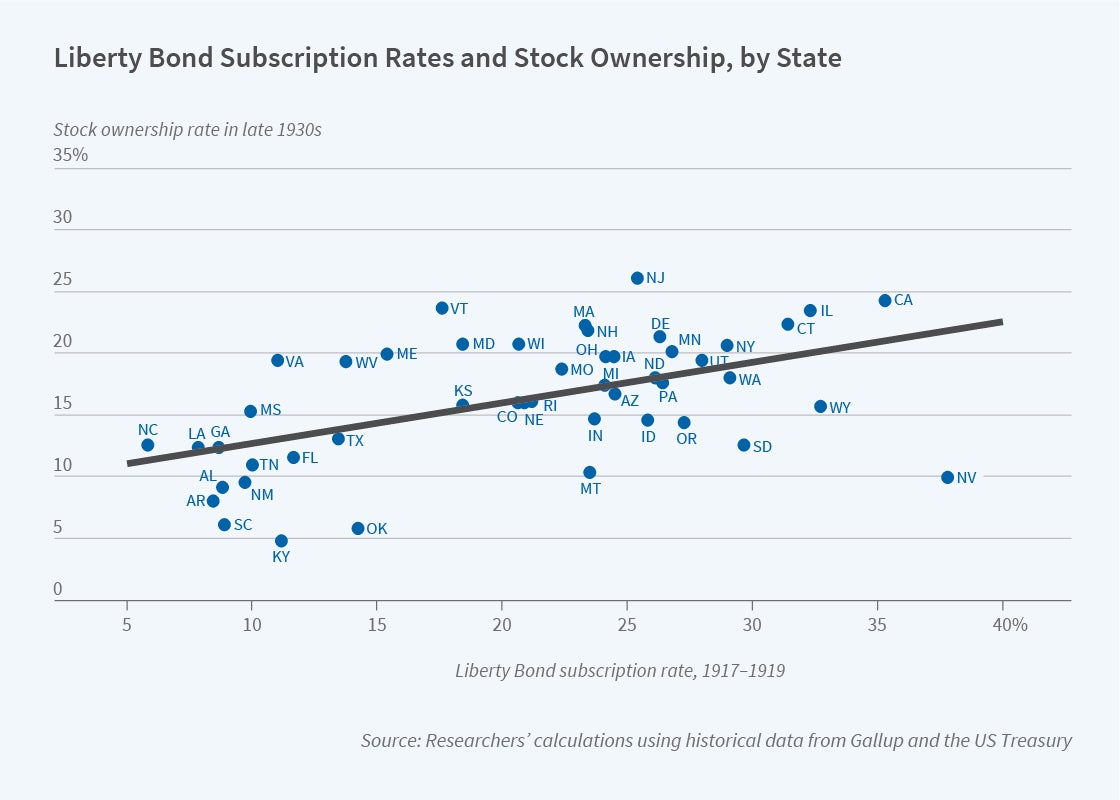WWI Liberty Bonds and the Culture of Investing
After the war, those who had subscribed to Liberty Bonds were more likely to invest in stocks and bonds, advancing the development of US capital markets.
In 1910, fewer than a million individuals owned corporate stock in the United States; by the 1930s that number had increased more than tenfold. What induced so many to move their savings, which were previously held largely in banks, to the security markets?
In When Uncle Sam Introduced Main Street to Wall Street: Liberty Bonds and the Transformation of American Finance (NBER Working Paper 27703), Eric Hilt, Matthew S. Jaremski, and Wendy Rahn find that the US government’s campaign to finance its World War I effort mobilized new battalions of investors.
During the war, political leaders enlisted financial institutions, fraternal organizations, and religious and community groups to persuade Americans that buying the government’s bonds was their civic duty. As a result, financial firms learned how to mass market securities, and middle-class Americans became accustomed to putting their savings to work outside the corner bank.
Liberty loans raised $22 billion to finance World War I, the equivalent of more than $5 trillion today. At least a third of Americans 18 or older bought bonds. Banks advanced customers money to purchase bonds, paving the way for the margin loans that played a significant part in the stock market run-up of the 1920s.
The researchers analyze data on bond sales in 869 counties in 17 states during the war and control for other factors that could affect security purchases and commercial bank assets. They find that, after the war, counties that had higher subscription rates to Liberty Bonds had lower levels of commercial bank assets. A 10 percentage point increase in a county’s rate of wartime bond subscription was associated with lower commercial bank assets of 7.3 percent in 1920 and 9.7 percent in 1929.
The researchers also analyze data from a survey George Gallup conducted in 1937–38 asking individuals if they owned any stocks and bonds. A single percentage point increase in a state’s Liberty Bond subscription rate was associated with a 0.3 percent increase in the likelihood that its residents owned securities two decades later. Without the Liberty Bond campaign, the researchers estimate that there would have been 22 percent fewer investment banks in 1929 and the collective assets of commercial banks would have been nearly a fifth greater than they were.
The researchers note that the shift of assets from commercial banks to the securities market may have curtailed bank lending, and slowed the growth of manufacturing and farming in some of the sampled counties. For the nation as a whole, however, they conclude that by raising financial literacy, the Liberty Bond campaign unleashed a new source of investment funding “that likely helped fuel the large-scale expansion in American industry of the mid-20th century.”
— Steve Maas



